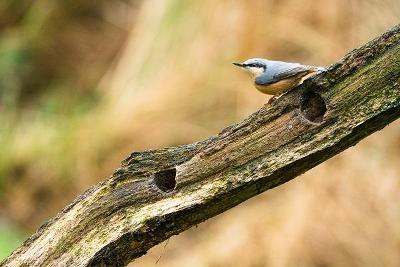January wildlife on the Tyne Derwent Way


After a period of rest, January heralds natural signs of the new year to come. We've now passed the winter solstice, and daylight is getting longer with each sunrise, which for wildlife means that change is in the air and spring is just around the corner.
January is a perfect time to visit the woodlands of the Tyne Derwent Way, with an unmissable opportunity to connect with the natural world's rhythms of change.
Despite it still being a few months until the breeding season starts for many species of birds, the dawn chorus is already beginning. Listen out for the early songsters this January; robin, blackbird, mistle thrush and great tit will all be singing, particularly on sunny days.
The Tyne Derwent Way has an incredible mix of woodland habitats. From Gateshead Riverside Park along to the Derwent Valley, there are many accessible woodland spots to visit.
We recently enjoyed a particularly wildlife-filled visit to Thornley Woods, much of which is classified as ancient woodland, meaning that it's been present since at least 1600! Ancient woodland is integrated into our history and culture; it is the home of folk tales, and has provided fuel and building materials for generations. However it now covers only 2.5% of the UK. It is not just human life that has a deep connection to these enchanting landscapes - ancient woodlands are home to a rich array of species, all of which have developed irreplaceable, interconnected relationships throughout time.
Thornley Woods has a brilliant bird hide, just across the road from the Thornley Woodlands Centre.
Keys for the hide can be purchased for £5 from the centre and provide access to five wildlife hides across Gateshead. Keep an eye out for species such as nuthatch, jay, bullfinch, great spotted woodpecker and other woodland birds.




